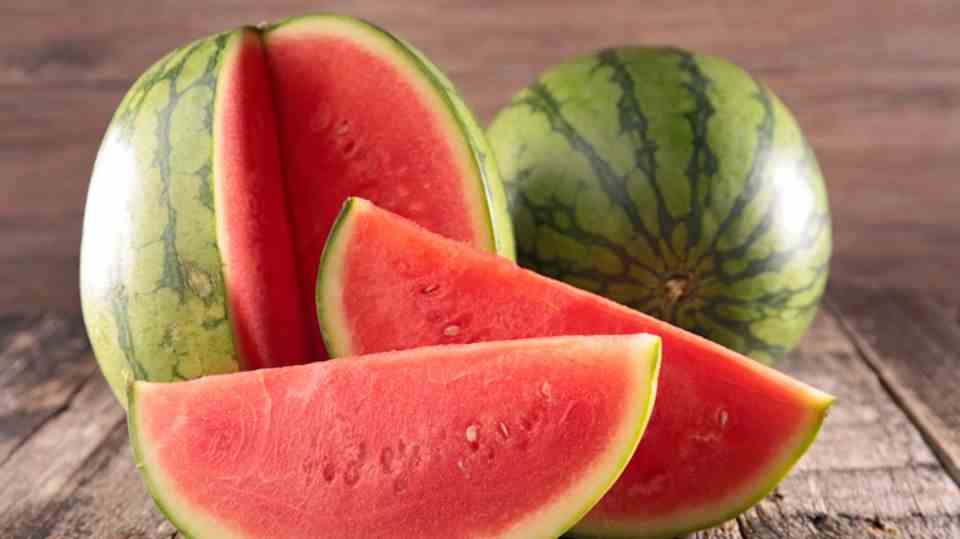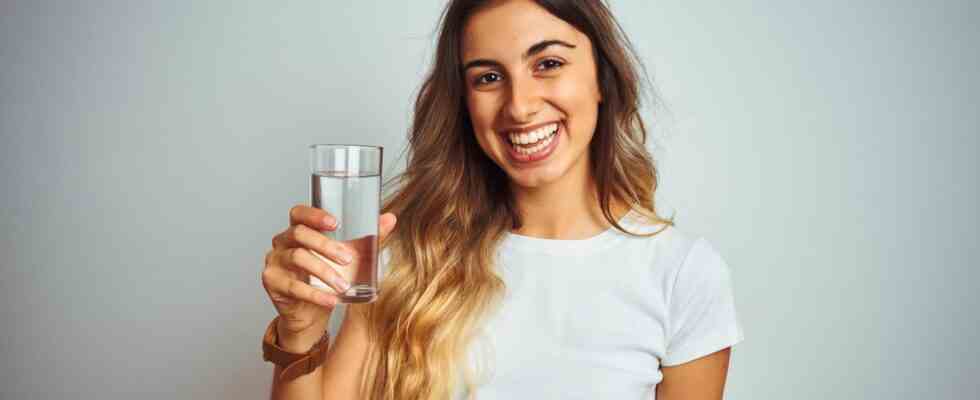Good to know
How much water do I actually have to drink in this heat?
Water or unsweetened teas are the best thirst quenchers
© AaronAmat / Getty Images
The sun is burning and the temperatures are climbing over 30 degrees: Summer heat is also hard on the body. What is the daily fluid requirement?
Water, water, water: Choosing the right thirst quencher is easy. It gets more difficult when it comes to drinking the right amount, especially in summer. How much liquid should it be a day to be adequately supplied?
It is often said that adults need between two and three liters. However, the value is set very high, at least when it refers to the amount you drink and not to the total liquid intake over the course of a day. Because the body also gets liquid from foods such as soups, vegetables, salads and fruit. Especially melons, tomatoes, cucumbers, strawberries and peaches contain large amounts of water.
The German Society for Nutrition (DGE) gives the general – and heat-independent – advice to drink around 1.5 liters a day in their 10 rules for a wholesome diet (under certain circumstances, however, the requirement can increase, see examples below). The liquid requirement is best satisfied with water, whether with or without sparkling water does not matter. Unsweetened fruit or herbal teas or heavily diluted fruit and vegetable juices add some variety to the glass. “Not recommended” for quenching thirst, however, are sugar-sweetened and alcoholic drinks, writes the DGE. They simply contain too many calories.
Good news for coffee drinkers
By the way: Coffee can also be added to the fluid balance. Contrary to popular belief, coffee does not dehydrate the body. However, it should not be more than four cups a day because of the caffeine it contains.
Under certain conditions, the body can require more fluid than the generally recommended 1.5 liters. Extreme heat is one of them, especially salty or protein-rich foods, intensive sport or illnesses with fever, diarrhea or vomiting. The DGE advises that people who eat little at times should also compensate for the lack of fluid intake through diet with drinking.

However, there is no general advice on how much more liquid is needed under these circumstances. As a rule, healthy people automatically drink as much as they need to compensate when they are thirsty. In any case, you should also pay attention to the body’s alarm signals on hot days: Headaches, exhaustion and concentration problems can be the first signs of a fluid deficit. Dark yellow urine or constipation can also indicate that too little has been drunk.
This is particularly critical for older people. “As we get older, our sense of thirst often decreases and we drink less,” writes the DGE. “It can be so attenuated that older people are no longer able to perceive an existing dehydration.” Older people should therefore be actively encouraged to drink, especially on hot days. It often helps to always have a full glass of water within sight or to have a drink with every meal.
Also read:
Why heat is so dangerous for the elderly
Is carbonated water unhealthy?

